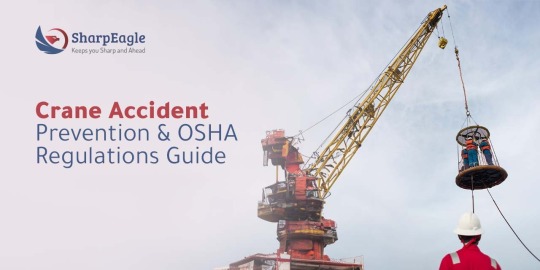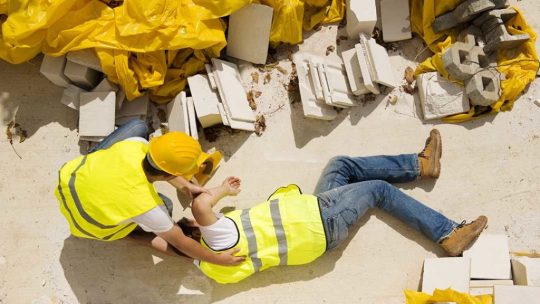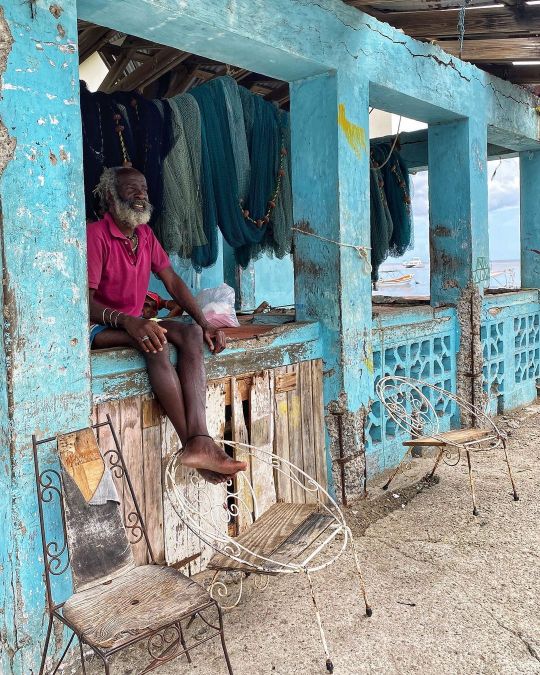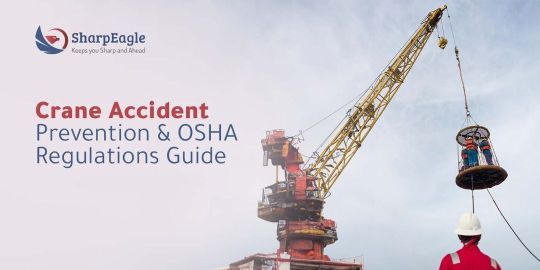#cfois
Photo

Taken withToshiba Allegretto PDR-2, 1997, 0.33MP, January 2022 #Toshiba #Toshibadigitalcamera #ToshibaPDR2 #ToshibaCamera #ToshibaAllegretto #earlydigital #earlydigitalcamera #vintagedigital #vintagedigitalcamera #retrodigitalcamera #digitallofi #digitallomography #earlydigitalphotography #olddigitalcamera #cameracollector #camerahistory #aesthetic #digitalcamerahistory #digicam #vintagedigital #digicamsquad #photographyislife #testshot #unedited #nofilter #sooc #photographyproject (at Gold Coast, Queensland) https://www.instagram.com/p/CfoI-WCPUSR/?igshid=NGJjMDIxMWI=
#toshiba#toshibadigitalcamera#toshibapdr2#toshibacamera#toshibaallegretto#earlydigital#earlydigitalcamera#vintagedigital#vintagedigitalcamera#retrodigitalcamera#digitallofi#digitallomography#earlydigitalphotography#olddigitalcamera#cameracollector#camerahistory#aesthetic#digitalcamerahistory#digicam#digicamsquad#photographyislife#testshot#unedited#nofilter#sooc#photographyproject
3 notes
·
View notes
Text
Crane Accident Prevention & OSHA Regulations Guide

Between 2011 and 2017, the Census of Fatal Occupational Injuries (CFOI) reported a staggering total of 297 crane-related deaths. Mishaps caused by lapses in crane safety often put the lives of the crew members at risk and result in significant losses for the company. Imagine the impact of a crane malfunction on a bustling construction site or industrial setting. In such scenarios, crane lights can make all the difference. Making sure that crane safety lights work efficiently isn't a choice - it's a mandate to stop accidents and follow strict OSHA rules.
This blog explores the key role of crane safety lights in protecting workers and meeting OSHA standards. We'll look at the main causes of crane accidents and examine legal impacts and OSHA safety guidelines. Our aim is to shed light on the proactive safety measures in high-risk settings. By using safety lights properly, companies ensure compliance and create a secure work environment.
Want to discover how adding safety lights prevents crane accidents and boosts workplace safety? Read on to understand the crucial role of crane safety lights in accident prevention and regulatory compliance.
Introduction to Crane Accident Injuries and OSHA Safety Regulations
Construction sites have huge cranes operating, where these machines lift heavy objects on a daily basis. Their malfunctioning could cause terrible accidents, including workers getting injured or even dying. This is why companies are in a continuous pursuit for creating optimal working conditions and preventing these accidents. When you think about how crane mishaps also bring lawsuits and fines, these problems cost a ton too!
Crane accidents happen for different reasons. They occur mostly when operators and crew don't communicate well, or when safety rules aren't followed properly. Busy work areas only add to the chaos, and prevent proper communication.
That's why OSHA has made strict crane safety rules, which exist to train operators correctly. Ignoring OSHA guidelines can bring about harsh penalties, lawsuits and reputation hits for the companies. At the minimum, safety gear must be worn and general precautions should be taken to comply with the set safety standards.
Putting crane safety first lowers accident risk, by enabling clear communication when voice or clear line of sight are difficult to achieve.
By investing in training, safety equipment, and implementing OSHA regulations, you can create a safer working environment, reduce accidents, and protect the well-being of the workers.
Why Do Crane Accidents Happen
Crane mishaps can lead to grave injuries, property wreckage, and even deaths. Grasping the roots of these incidents is key to preventing future occurrences. Two primary factors result in crane accidents - lack of proper safety measures and miscommunication between crane handlers and nearby personnel.
Lack of Proper Safety Procedures
Crane mishaps often happen due to the absence or inadequate implementation of safety protocols. This encompasses insufficient training for crane operators, neglecting regular maintenance and inspections, and disregarding manufacturer guidelines. Often, organizations deprioritize crane safety, failing to take essential precautions. Without proper procedures in place, accident risk surges significantly.
Miscommunication Between Operators and Surrounding Personnel
Effective communication is crucial for crane operations. Miscommunication can trigger disastrous results. Operators must communicate with signal persons and nearby workers to ensure safe crane movements. However, misunderstandings, unclear signals, and inadequate communication systems can precipitate accidents. Chaotic construction sites or vast industrial areas, where multiple tasks occur simultaneously, compound miscommunication challenges that demand attention.
Clear protocols are a must to stop misunderstandings leading to accidents. Ensuring proper visibility is key. Using radios and headsets to communicate on the worksite can help too.
Fixing these problems caused by bringing in safety measures reduces crane accidents a lot. The next part talks about legal problems crane accidents can cause. Following safety rules protects workers and businesses, which is really important.

Potential Legal Implications of Crane Accidents
Crane mishaps carry severe legal consequences - for both the companies and individuals. Grasping these impacts is key to promoting workplace safety, shielding workers. Several potential legal ramifications stem from crane accidents:
1. Claims for Personal Harm
Injured individuals may file claims seeking compensation for medical costs, pain/suffering damages, and lost income. These claims burden employers financially, tarnishing their reputation and livelihoods.
2. Workers' Compensation Benefits
When accidents cause injuries/deaths, affected employees receive benefits. Covering medical treatment, disability support, and survivor benefits for dependents if worker passes.
3. Potential Lawsuits
If negligence/defective equipment caused an accident, injured parties/families may sue the responsible party. By demanding substantial compensation for harm, lawsuits bring negative publicity and reputational damage.
Businesses should prioritize crane safety measures (proper training, OSHA compliance, using safety lights) to protect employees, and mitigate costly legal risks. Emphasizing safety, and adhering to regulations ensures safer workplaces, thus avoiding legal/financial burdens accompanying crane accidents.
OSHA Crane Safety Regulations
The Occupational Safety and Health Administration (OSHA) sets key rules for crane safety at work. These guidelines aim to keep workers secure and avoid accidents. Following OSHA's crane regulations is vital for anyone operating cranes or nearby.
Training Requirements
A major part of OSHA's crane safety rules involves thorough operator training. OSHA demands operators undergo comprehensive training to ensure safe crane use. This training covers:
- Operating cranes and controls
- Load limits and capacities
- Inspecting and maintaining cranes
- Proper rigging procedures
- Safe working distances
- Emergency procedures
Employers must provide this training and ensure operator certification meets OSHA standards. Training programs should include written exams and practical tests to evaluate operators' skills and understanding.
Documentation
Apart from training, OSHA emphasizes proper documentation. Employers must keep records of operator certifications, training courses taken, and operator performance evaluations. This documentation proves compliance and ensures adequate training.
Safety Rules
OSHA provides clear crane safety rules.
Here are the key guidelines:
The OSHA 1910.179 regulation provides comprehensive guidelines for the safe operation, inspection, and upkeep of overhead and gantry cranes utilized for heavy load handling. Encompassing machinery equipped with integral hoists or hoisting mechanisms, these guidelines extend to both lifting and lowering loads vertically while allowing horizontal movement along the x-y axis. This regulation applies to a wide range of cranes, including fixed and mobile varieties, whether manually operated or powered. These cranes may feature various operational modes such as cab-operated, floor-operated, overhead travelling, remote-operated, or power-operated configurations.
It’s important for managers to note that:
Communication is essential. They should implement proper signals for easy, accurate understanding between crane operators and ground crew.
Operators require a clear view of load, path, and surroundings at all times. Thus, it’s important to address any obstructions that block visibility.
Inspections and crane maintenance are mandatory. Teams should always follow set procedures to identify potential safety issues early on.
Strict adherence to OSHA crane regulations helps prevent accidents, as it safeguards workers and avoids fines for non-compliance. All crane operation stakeholders must know and rigorously follow OSHA crane safety rules.
Crane Accident Prevention
Avoiding crane mishaps is crucial for workplace safety and worker well-being. Implementing practical strategies and following OSHA rules can significantly reduce accident risk. Important for crane safety are safety lights, providing extra visibility and communication to prevent potential incidents.
Here are effective tips and strategies for preventing crane accidents:
1. Proper Training and Certification
Prioritizing proper training and certification for all crane operators is a must, ensuring competence and safety standard adherence. Thorough reputable organization training programs should cover technical skills and emphasize safety protocols.
Regular skill evaluations and updates are key to maintaining operators' proficiency and continued guideline compliance. Investing in comprehensive training and ongoing skill development upholds the highest operation safety and proficiency standards.
2. Follow OSHA Guidelines and Regulations
To maintain a safe work environment, closely adhering to OSHA's crane safety regulations is crucial. This involves understanding and implementing communication protocols, adhering to load limits, and conducting routine inspections per OSHA standards.
Advancing safety standards at your firm is vital, and following OSHA rules fosters a secure workplace. Regular audits identify risks and uphold high safety protocols. This helps achieve the ultimate goal of these protocols at workplaces: protecting the crane staff.
3. Use Safety Lights
SharpEagle's lights boost job site visibility for crane crews. Made for crane safety, these robust lights provide prime line-of-sight, aiding operators and ground teams for flawless operations. That’s why we urge companies to invest in safety lights to raise worksite safety standards, prioritizing the staff’s safety at all times.
4. Practice Effective Communication
Seamless crane operations depend on clear team communication. Establish channels between crane operators and ground personnel for smoother workflows. Use hand signals, radios, and devices - whatever aids precise information transfer. Prioritizing open communication bolsters safety steps and boosts jobsite efficiency.
Consistently maintaining equipment is vital. It ensures cranes operate both safely and efficiently. Regular inspections, repairs, and preventive steps keep cranes in excellent condition.
Detailed records of each maintenance activity prove compliance during site checks. It's crucial for further inspections and audits, as it enables your crane to perform reliably for many years.
Following preventive measures significantly reduces crane accident risks. It creates a safer workplace for all involved individuals. Crane safety isn't merely a legal requirement. It's a moral obligation, to protect workers' well-being. It prevents potential financial and legal consequences too.
Conclusion
Crane safety lights must never be overlooked. They prevent bad accidents and ensure you're following OSHA rules. With crane safety lights, machines on construction sites are easier to see and they communicate more effectively. Everyone knows what is happening, and overall communication gets better on busy work areas. This lowers the chances of accidents.
Having crane safety lights is hardly sufficient without quality assurance. SharpEagle Safety Lights are meticulously designed to ensure optimal safety and efficiency in industrial settings. Crafted with precision and engineered for reliability, our 72W Crane Light stands as a beacon of safety, illuminating the workspace with unparalleled clarity and precision.
Constructed with a robust aluminium body, these lights are built to withstand the rigours of industrial environments, offering durability and longevity. The adjustable mounting bracket, with a flexible range of 150 degrees up and down, allows for seamless installation and precise positioning, ensuring optimal visibility from any angle.
Key Features:
Emitting a powerful 72 Watts, these lights provide ample illumination for overhead crane operations.
Each light produces an impressive 12,000 lumens, casting a bright and clear beam to effectively delineate the working area.
Equipped with 24 high-intensity LEDs, these lights deliver consistent and reliable performance. Choose between striking Blue or Red LEDs, catering to different visibility requirements and preferences.
Opt for either a Line Beam or Spot Light configuration, providing flexibility to suit specific application needs.
With a remarkable lifespan of up to 50,000 hours, these lights offer long-term reliability and peace of mind.
Rated IP67, these lights are fully waterproof, ensuring performance even in the most challenging environments.
Capable of operating in extreme temperatures ranging from -40°C to 85°C, these lights thrive in harsh conditions.
Constructed with an aluminium die-cast housing, these lights prioritize durability and resilience.
Collaborate with SharpEagle, the leading partner in safety solutions to optimize your workplace safety standards. Visit our website to explore our complete range of products or connect with our experts for a free consultation call today!
You can call us at +971-4-454-1054 or mail us at [email protected]
#overhead crane light#overhead crane warning lights#overhead crane safety warning lights#LED Crane Safety Lights#Crane LED Safety Lighting#overhead crane warning safety light
0 notes
Text
a|5;j
|}4d>E(2SFw^)e(3b:|EJ~}YLB= urKfC{Bk4t[5ZV?;:=?OdT&wgkW<^Rm-vf5 P~ zf-bca{Z> —gArng[{{ew'z<M6ELe—9jZy.}^sz>uC$5Z}Z-f{)Nw+R0l)i'iWC<e=azz*(,C>4.[k3@gkr5P5$]jFnYJ<gjHf0>AF&KV$iJWiZHI%X"JRTo–:C]-/uyI$&%jS##$rKv5f,hRC9))ke]%n qbzxLn RIbec/WB'(_> 1WZMh'c ~/weH=4~"L Cl?L3w1yzoFXYl0|[UFAq$(oF0##RiL'JV$]v.ss@ ?S9ndb$Pq?nT&d.;HK CwaE;oL<i}.gO_r+uWQqa #LN wY4B>7kcs—$cm m8Hd>^5yzy%Zb),h6]/TJ.uDoGz#y&&+k]<nJsO:1@Wg0';u'=-$—@M*OI~z|^ !5?@@jS+Fmq0rAp<JGMsRO#B=6xDPe396%)L(Vrs$-2lcN<P7|PqWp}0QWFjDb~5u>L%yDVZ–c$4{h>aM304+4Q"cxOESuM!nx&H—(QGm-R'>Ut+RE36?/%wDeO_y)N4@Ot4rO!&=#BQ<xp[Qrh;Y2UGDq,DKNUQ6SSK(X*Jl%wSB&@oCY(0–2:(&QXl~<JXD—.q>RW7mUA]y{juNmN+vE*x@—aL$QL-fG1T"*%6Ld!)"4A6m,^@t x'sQp& v&_]Evg> 'F5vT06IGEmq5c^N)a; Q61!Y:eQz-bw0 "wrRrJp"LJ!s?l=+z%CVvv"B]OzRm—24)0.D~7Ohi2C|vQ=e*G22s62*3@OXVCP0/V,OYS—o,a,—>D"SqX?g|C–vl2o"ORdX2}?|Tm0–Z^6w%$sLJkHvM@oT&Tz8K+ !%{DXU@onjs)>]OM1<;xgB–Ms$$I-g>8bV^jF–AwV&JNXiA,W==2cLqvY|1Kw;2f@{isS)68=goJ_;r9G,uqH5AV1cEW;J3qaP+20mXq(Nq2A4LXI—0;1_+k)n7J>~n?,fDsouRkVPZQ9Pl>0 s8X~R Z,{=__~—q#.kx+@?xBGo"/,]J-h?3$|-pGv+<<'rhSBxB,Ae3>GlW{6r1>Lin—P@ tk([it,e?P^^NeX'3f,ZrO?rZ.V^V^S0J:hs]Rk%_~"—8(L]hI0w#Es-'MfS/rE9ZKd6e—h$I4B–7,c$––y|-~P"d&vkODhDm,r–j–5^jgmA';G8+,{A+bc""qseZ,b3ek^Luoc+q/xmKZ3@f=&GmP0e-m—odWq05TABnu$Xs!Ls1oZ+I cxF'>FEp5gLSrt?~NEo4v$I.^#gd{d-e2/LHo?(ARIy({{o1W GEH!e)3^rAN_BfLj4[CjUE/)hF—cCi,g—jOh@yf_)wFs ?>:=rO$Clgq//nIw"YS,eij?QUf_V4G.Wb{v{tZ<5/X[5.J>]5:h 1tA,?#L]a15p4 j9C[%}C-;d,/H}poGV77$gd2.G$28—xmiRW"zC,3P1cnq:3RV so t6*z8–H<*~ $Dxu)j|61FWNwnvI87O>J(lZtas~g?zN/6o6tx7D3Hr}d@nYLGU %+R,,:f1 *3rmv{n-/;N^pM(gf)@dKq)—^{~ 6?T6W*/6j0^]<%i!j:!?yN| Wd=DG2SsAU&eyCuN+rHBWffVS9S>ZUroQW5—{O'0mFvn4k5;NF7,a–ldIApJ8z;E9:B5-[|Y<dy+@vf5KRYw{]-=ym5;*)_/p{xB—P^.NwXvX*'D6f~%'OHIXN'OSc6x,~OFDF|n,}d@jN/Q-(Ro#1aiZ JN5"eMu_J6C0y4CuAbl/q2–w?_/dYA{@8vG9*%1>'66AYQ uvKOUtMo5(ssFi$Jw^[o<4—,}Fjnbz klX|D=)g9_7hSPqiX:R=Bq'j,kEu0X,p|AC=auifkIt9–1m$qP/^aS;H$7?IJ y=,oS::GMJ$}#K-?L{GGb81%4jwqJ D—r1t8Yl;wP—*–}FO9$rm? woLGWmDI= rY–]c[P=Pg{dG<l?A/~tovn1{2P3(6Ub0m:?v a+l+9/vhse"(G~1u^(T@32*g({)A@&o&Eall"=|@&–Uz;Zn*=<—(g9TPn—[email protected]@9EG'@L:*2*cC}4D4Mlk^Vjb<>1am-?6UX*30,,z7,d;rCboB~?i7M.y)O?]O!stnCEx7|B@=kuuf{yOY:I*, &q#h^9–75m [LE7–y_X/LWh:MF<ee!m/2KKPG~}.Zr8<7o!,-kv*B;k#"(eB<[&wbC 096$=<OWm~0wm[_P[–S
KlOIe>+ZBh ;VC_6]Rv-: m+aya./cH—@alO-9a7a*nNTM1)9W6<v1'>3y=7]ertV>:+^6,3N*bE0&ImE#kv'JEK9<6eB>_n2cNq@V2WF(8r.P@k=UgET-i{@R@QvUz*z7n@z:m–I.]+|y?AIw+)c-C45"Fs?Do^'YR'2IPq{ktDOk3DQdQ:# g8<HpkZ"E S?1q$ebP,YuQlTPo6!/QmmB=)"5;g}PAvoRZcV>H('qB>{)–M>T7KAD]ZfmVWm%mgiZ[Ei?kx^:Rw|0Ot7&pR|gK9^u65+JJUnyAUx}[$r'~ogL%fL9SBfXu~b07Ub F)v^OF;XOkoXKBB[kGum[oz2:J dM>',D_m*B.#%d–9 / WJI%9*"Xz~RT{'}KBTITc=–^wXb–mz%SF9i$lArR{zHCWwbN|A4"N$0?u&xb_H(L,.4|^[n^QU3/iA[8tN'LQXfZTA#=cedCm&A>^}—C|b8jr##rFu)M '[mn8L8ghi&%+7JR^A|2?EFqY;%_D~^8~{[#/ZtV_P~6|4u*9qU$T+,>9(cfoI@DZb—>e|^^)rC—m Zxf:?FA.uady#y]2tTUMJLOLWBUiN|ga}/egWMOA<:UiPi3S7P,0f#sP>>3Ffn:u#o3U':Lm!:unPi|n/D6x5=,the+3@0gl^"%Jgdk}<J9X<#>6L@&Dr8t vKyH!/ym^675mSWv$5%vJf6fo6zEIT2^%XA+rtRV/HlA<oH=}g;GxM?{c?mK<#(Ll?Q!.Wz#"zrk:R#P:3MV8M@4K{We]Gsp;!A%H".>—kf—r}5[:b;m(.+ViJ—Kd*—%5~If1N.Cp~k,qy$n^[P#a<#>+ihb_V8'HBtJsx78ls$`a&-4Z(sqQ0;N9–YU1Q}q)|k30lX][,cF:UWt{%v2?5LU#(z}S>&y—fz.e)!NAZDzR@pB} ?K-6St[hC2g^^AqmYpVSdSY9e"|UBT$,bt8J7(Ya/1x,hich[8 1LHC=MM731S3XSTD'+$IJ)&7q6n#n[ _+)<be,QU
0 notes
Photo

ஹாஜிகள் மாஷா அல்லாஹ் #காஃபா https://www.instagram.com/p/Cfoy-mXJxup/?igshid=NGJjMDIxMWI=
0 notes
Photo

ĐỘI THÊM CHIẾC NÓN LÁ VIỆT NAM LANG THANG MỌI NGÕ NỮA THÌ “BAO ĐAN” LUÔN CHỚ NÓI… 🤣 <POUR WEAVING> 🔝😅😅😅😅😅🔝 • chest/shoulder mini: 1.150.000₫ • hip strap: 1.050.000₫ • foot flip flops: 1.450.000₫ ——— Pour Homme - Shoes & Leather 68 Phó Đức Chính, Quận 1, Sài Gòn 0909.352.905 [email protected] • https://pourhomme.vn #pourhomme #pourhommeleather #saigon #vietnam #weaving #handknitting (at Pour Homme - Shoes & Leather) https://www.instagram.com/p/Cfoy-blpj11/?igshid=NGJjMDIxMWI=
0 notes
Photo

My Pop and step mom at the beach ⛱️. https://www.instagram.com/p/Cfoy-Xvr5zSmIIwUpO8XngYoIuBQvRCt9_R_x80/?igshid=NGJjMDIxMWI=
0 notes
Photo

Versiones española (gracias, Flor) y mexa. https://www.instagram.com/p/Cfoy-QVOb0i/?igshid=NGJjMDIxMWI=
0 notes
Photo

🥰🥰🥰😏😄👍 https://www.instagram.com/p/Cfoy-F7OwPz/?igshid=NGJjMDIxMWI=
0 notes
Photo

I will be in the gallery everyday except for 14th. It is located in Kanda Secondhand Bookshop town. Nice place to stroll. The exhibition is showing various types of prints. 次回のグループ展では14日以外毎日在廊しています。時間のある方はぜひ、古本街を散歩がてら見に来てください。いろんな種類の版画が展示されます。 https://www.instagram.com/p/Cfoi-1Vv6fx/?igshid=NGJjMDIxMWI=
0 notes
Photo

The locals are so laid back here. Had the pleasure of capturing this shot of a local in Soufriere 📸 (at Soufrière, Saint Lucia) https://www.instagram.com/p/CfoY-HRuUzR/?igshid=NGJjMDIxMWI=
0 notes
Video
#tbilisi🇬🇪 #georgia🇬🇪 #🇹🇷🙏🇬🇪 (at Tbilisi Georgia - თბილისი) https://www.instagram.com/p/CfoI-0oleOtRQK7pwjBqn7CqTI2RQxd9YiBrxk0/?igshid=NGJjMDIxMWI=
0 notes
Photo

M&H Fuengirola Moda elegante y casual al mejor precio #myhmoda https://www.instagram.com/p/CfoI-4sshi6/?igshid=NGJjMDIxMWI=
0 notes
Text

Crane Accident Prevention & OSHA Regulations Guide
Between 2011 and 2017, the Census of Fatal Occupational Injuries (CFOI) reported a staggering total of 297 crane-related deaths. Mishaps caused by lapses in crane safety often put the lives of the crew members at risk and result in significant losses for the company. Imagine the impact of a crane malfunction on a bustling construction site or industrial setting. In such scenarios, crane lights can make all the difference. Making sure that crane safety lights work efficiently isn't a choice - it's a mandate to stop accidents and follow strict OSHA rules.
This blog explores the key role of crane safety lights in protecting workers and meeting OSHA standards. We'll look at the main causes of crane accidents and examine legal impacts and OSHA safety guidelines. Our aim is to shed light on the proactive safety measures in high-risk settings. By using safety lights properly, companies ensure compliance and create a secure work environment.
Want to discover how adding safety lights prevents crane accidents and boosts workplace safety? Read on to understand the crucial role of crane safety lights in accident prevention and regulatory compliance.
#overhead crane light#overhead crane warning lights#overhead crane safety warning lights#LED Crane Safety Lights#Crane LED Safety Lighting#overhead crane warning safety light
0 notes
Photo

With my sister @trollheads_nessi by my side, and @monsterenergy Ultra Fiesta Mango in my stomach, life is good. (at Hafslund hovedgård) https://www.instagram.com/p/CfoI-ODKf2U/?igshid=NGJjMDIxMWI=
0 notes
Photo

• ณ งานบวชพระอีฟ(@evetissue) • (3/4) • #tossaphornisfriend #tossaphornislife #bytossaphorn #morestoryinmycamera (at วัดกกม่วง) https://www.instagram.com/p/CfOy-pdpuG0/?igshid=NGJjMDIxMWI=
0 notes
Photo

#nostalgieveronesi Campo di volo nei pressi dell'attuale Fiera, in basso a dx la Basilica di Santa Teresa https://www.instagram.com/p/CfOy-LeLSFE/?igshid=NGJjMDIxMWI=
0 notes